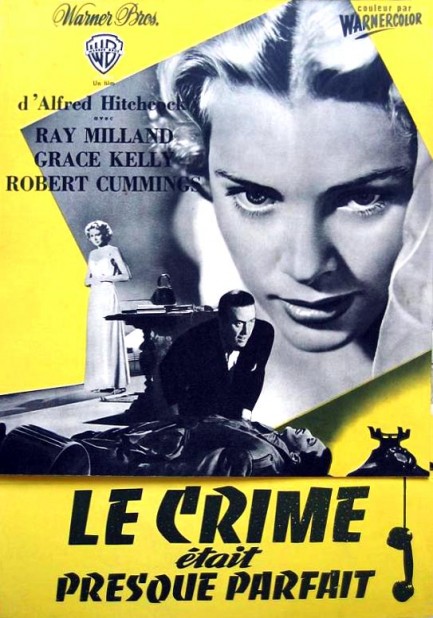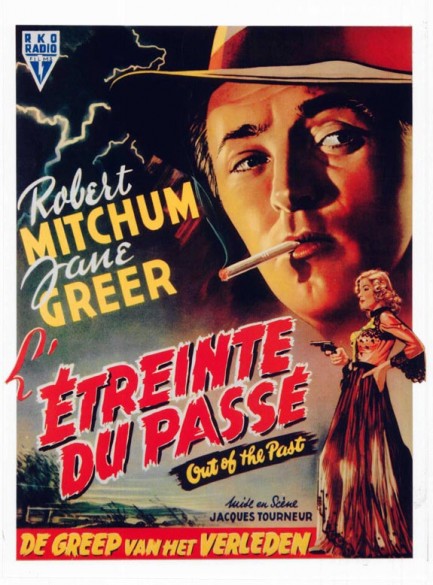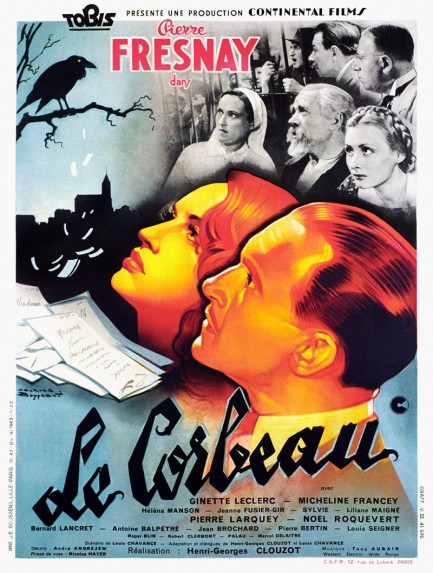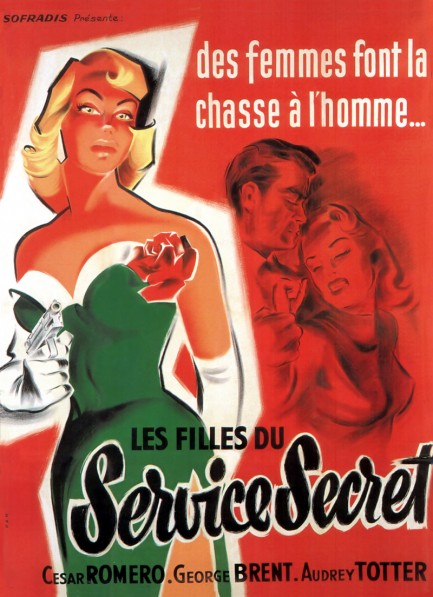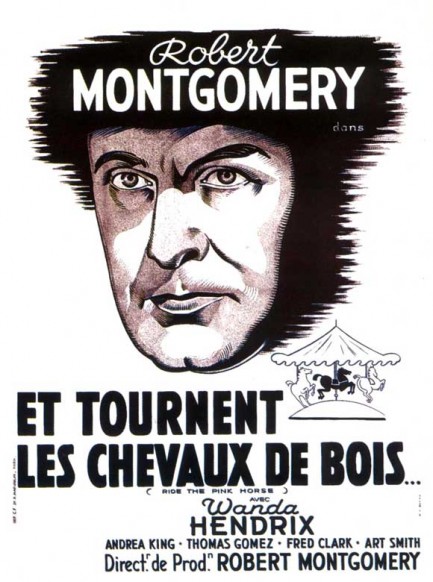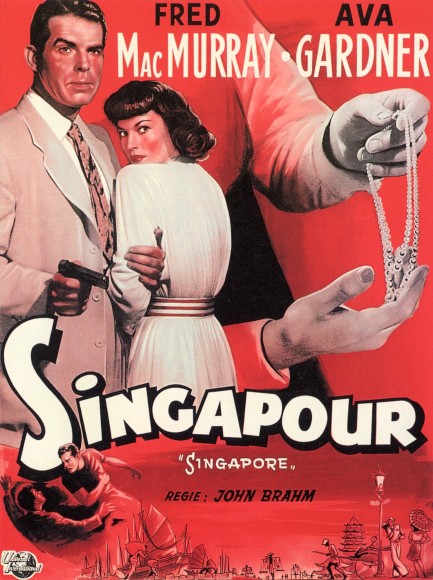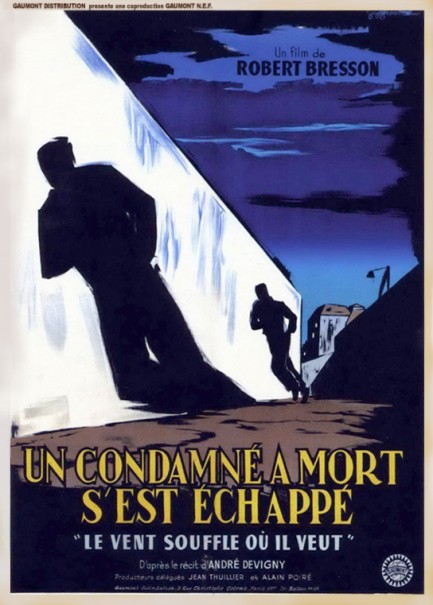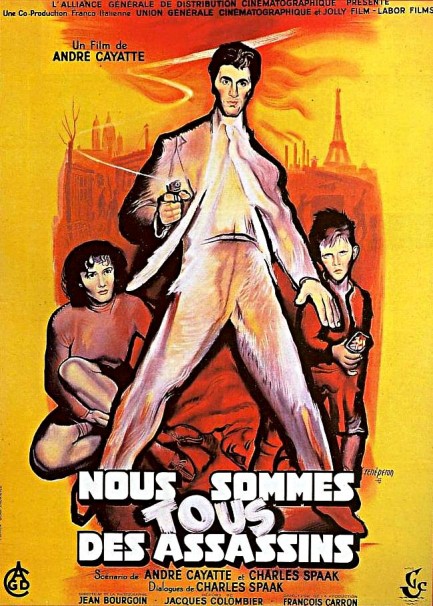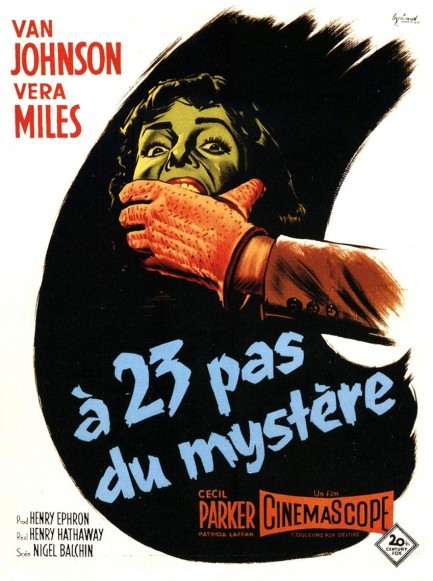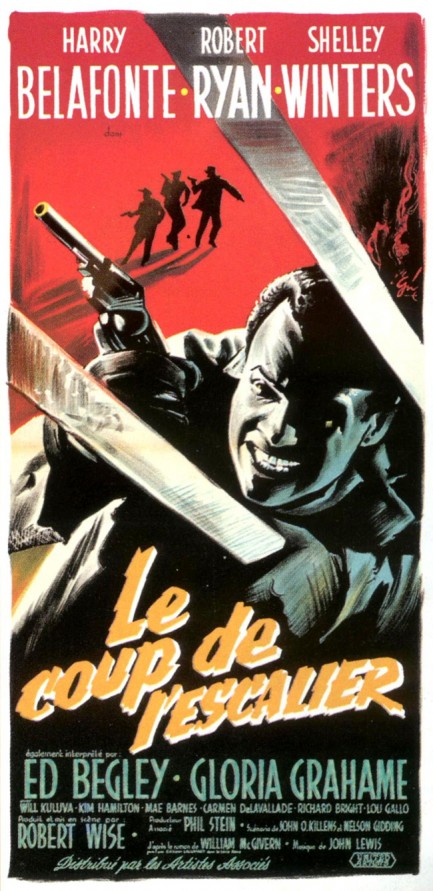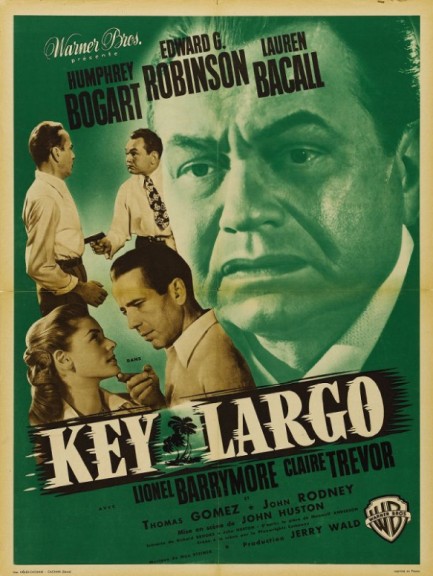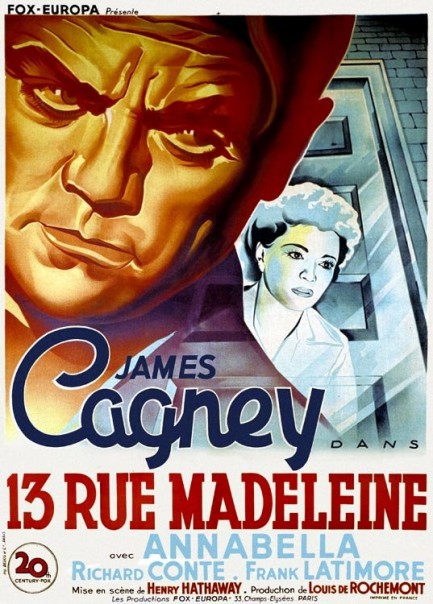 He'll learn any tune you want him to. 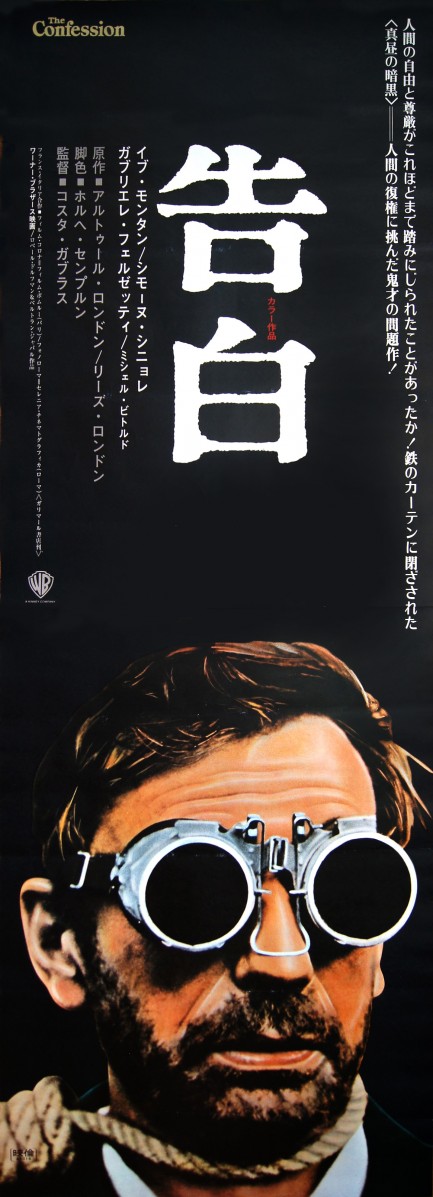
The above poster, with its sinister art, was made for the Japanese run of a 1970 French movie titled L'aveu, aka The Confession. It was directed by Costa-Gavras, who often delves into political themes, and here Yves Montand stars as a Czech communist party official named Anton who is one day followed, arrested without warrant, and thrown in jail without charge or access to legal counsel. He thinks it's a mistake but soon realizes party officials suspect him of treason and plan to extract a confession through whatever means are required. He's subjected to isolation, sleep deprivation, and rough treatment, all presented here unequivocally as torture. And indeed when the movie was made there was no doubt what it was. But these days, in the U.S., tens of millions of people and many government officials say it isn't torture—or worse, say it is torture and should be used more. For that reason the film, in the fullness of time, now offers a double lesson—its intended one about a Soviet empire that collapsed, and an unintended one about an American empire making the same mistakes. In L'aveu the state tries to forcibly program Anton; in the U.S. millions have been programmed to accept torture simply because the state has told them to. For us, it was all pretty hard to watch, but it's a damned good movie. It premiered in Japan today in 1971. 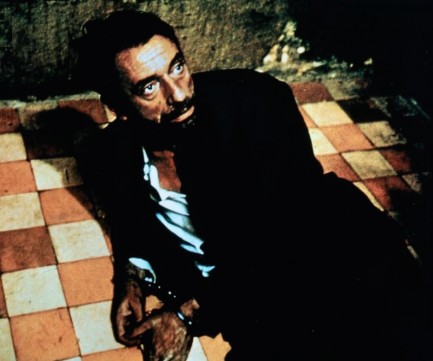 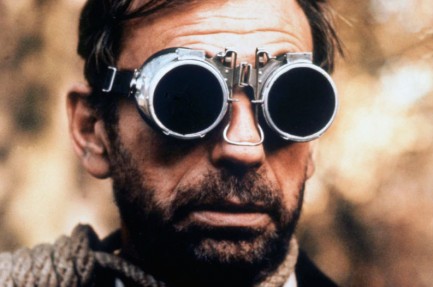
 Which came first—the paroled convict or the escaped criminal? 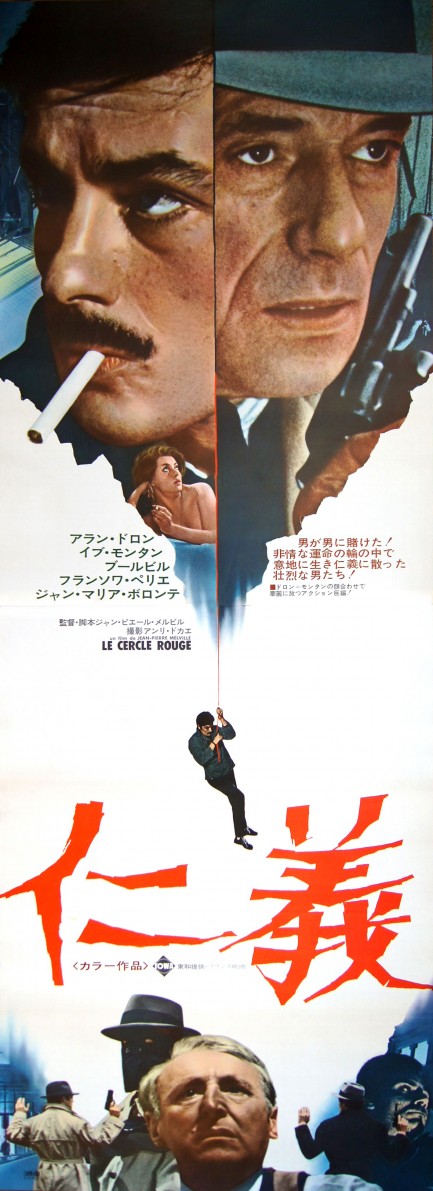
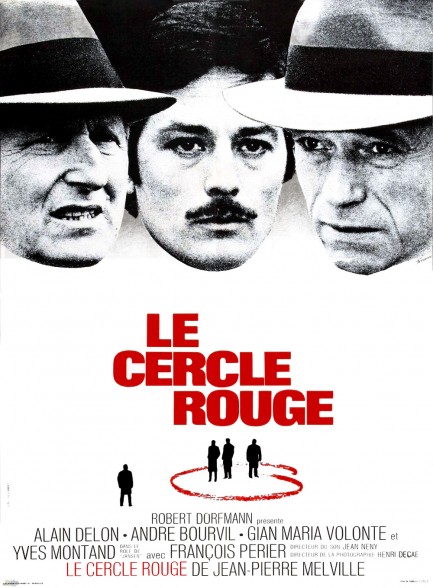 This Japanese poster was made for Le cercle rouge, a French heist movie starring Alain Delon, André Bourvil, Gian Maria Volontè, and Yves Montand. It's an excellent flick that uses a bizarre plot device—a newly paroled convict who's been talked into a jewel heist finds a criminal who's just escaped from custody hiding in the trunk of his car, and subsequently decides to team up with the guy on the jewel robbery. This Japanese poster was made for Le cercle rouge, a French heist movie starring Alain Delon, André Bourvil, Gian Maria Volontè, and Yves Montand. It's an excellent flick that uses a bizarre plot device—a newly paroled convict who's been talked into a jewel heist finds a criminal who's just escaped from custody hiding in the trunk of his car, and subsequently decides to team up with the guy on the jewel robbery.
There's more involved than just that, of course, but what are the odds of a criminal taking refuge in another criminal's car and turning out to be just the right partner for an upcoming robbery? We'd say it's possible only in writer-director Jean-Pierre Melville's imagination, but he makes this insane coincidence work. A third man completes the heist crew and off they go to make their big score. Or at least try. This is really good, hard-boiled stuff, with that French flair. Le cercle rouge opened in France in October 1970, and made it to Japan today the same year. The French poster above and right, by the way, looks mighty familiar. It's similar to one made for another very good Alain Delon crime movie, also centered around a jewel heist, 1969's Le clan des Siciliens. Well, don't mess with success.
 Only the good go to sleep at night. 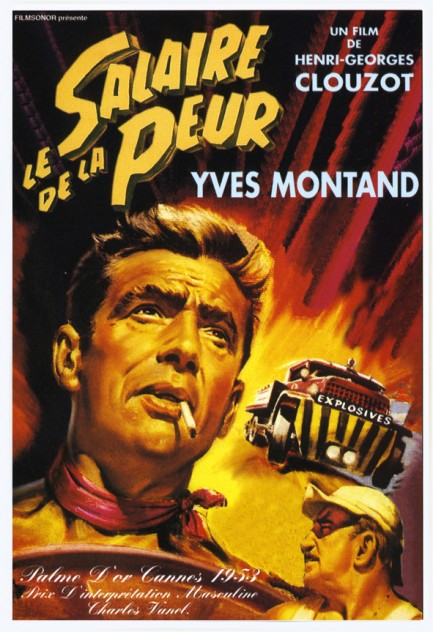
The French coined the term film noir, so it seems only fitting to feature a collection of French posters celebrating the genre. Above and below are fifteen examples promoting films noir from France, Britain, and the U.S., representing some of the best ever produced within the art form, as well as some less celebrated examples that we happen to love. Of those, we highly recommend seeing Le salaire de la peur, for which you see the poster above, and Ride the Pink Horse, below, which played as Et tournent les chevaux de bois in France. Just a word about those films (and feel free to skip ahead to the art, because really, who has time these days to listen to a couple of anonymous internet scribes ramble on about old movies?). 1953’s Le salaire de la peur is about a group of men stranded in an oil company town in the mountains of Latin America. In order to earn the wages to get out, four of them agree to drive two trucks filled with nitroglycerine over many miles of dangerous terrain. The idea is to use the chemicals to put out a raging oil well fire that is consuming company profits by the second, but of course the film is really about whether the men can even get there alive. Le salaire de la peur was critically praised when released in Europe, but in the U.S., political factions raised their ugly heads and got censors to crudely re-edit the prints so as to reduce the movie’s anti-capitalist (and by extension anti-American) subtext. The movie was later remade by Hollywood twice—once in 1958 as Hell’s Highway, and again in 1977 as Sorcerer. The original is by far the best.
1947’s Ride the Pink Horse is an obscure noir, but a quintessential one, in our opinion. If many noirs feature embittered World War II vets as their anti-heroes, Robert Montgomery’s Lucky Gagin is the bitterest of them all. He arrives in a New Mexico border town on a quest to avenge the death of a friend. The plot is thin—or perhaps stripped down would be a better description—but Montgomery’s atmospheric direction makes up for that. Like a lot of mid-century films featuring ethnic characters, the most important one is played by a white actor (Wanda Hendrix, in a coating of what looks like brown shoe polish). It's racist, for sure, but within the universe of the film Lucky Gagin sees everyone around him only as obstacles or allies—i.e., equals within his own distinct worldview. So that makes up for it. Or maybe not. In any case, we think Ride the Pink Horse is worth a look. Thirteen more posters below.
|
 |

The headlines that mattered yesteryear.
2003—Hope Dies
Film legend Bob Hope dies of pneumonia two months after celebrating his 100th birthday. 1945—Churchill Given the Sack
In spite of admiring Winston Churchill as a great wartime leader, Britons elect
Clement Attlee the nation's new prime minister in a sweeping victory for the Labour Party over the Conservatives. 1952—Evita Peron Dies
Eva Duarte de Peron, aka Evita, wife of the president of the Argentine Republic, dies from cancer at age 33. Evita had brought the working classes into a position of political power never witnessed before, but was hated by the nation's powerful military class. She is lain to rest in Milan, Italy in a secret grave under a nun's name, but is eventually returned to Argentina for reburial beside her husband in 1974. 1943—Mussolini Calls It Quits
Italian dictator Benito Mussolini steps down as head of the armed forces and the government. It soon becomes clear that Il Duce did not relinquish power voluntarily, but was forced to resign after former Fascist colleagues turned against him. He is later installed by Germany as leader of the Italian Social Republic in the north of the country, but is killed by partisans in 1945.
|

|
|

It's easy. We have an uploader that makes it a snap. Use it to submit your art, text, header, and subhead. Your post can be funny, serious, or anything in between, as long as it's vintage pulp. You'll get a byline and experience the fleeting pride of free authorship. We'll edit your post for typos, but the rest is up to you. Click here to give us your best shot.

|
|






 This Japanese poster was made for Le cercle rouge, a French heist movie starring Alain Delon, André Bourvil, Gian Maria Volontè, and Yves Montand. It's an excellent flick that uses a bizarre plot device—a newly paroled convict who's been talked into a jewel heist finds a criminal who's just escaped from custody hiding in the trunk of his car, and subsequently decides to team up with the guy on the jewel robbery.
This Japanese poster was made for Le cercle rouge, a French heist movie starring Alain Delon, André Bourvil, Gian Maria Volontè, and Yves Montand. It's an excellent flick that uses a bizarre plot device—a newly paroled convict who's been talked into a jewel heist finds a criminal who's just escaped from custody hiding in the trunk of his car, and subsequently decides to team up with the guy on the jewel robbery.

